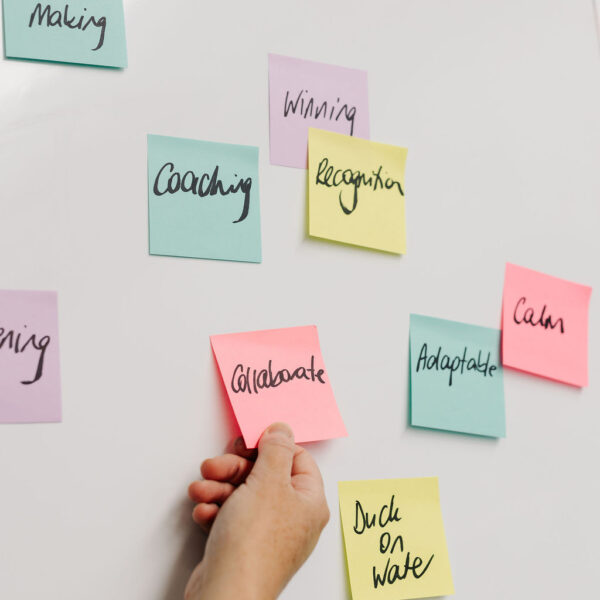Analytics is more than a buzzword in business today; it’s a got-to-do.
Why? Because by using analytics to discover meaningful patterns in your data, you can better understand your company, people and customers and make more informed strategic decisions. In other words, it gives you an edge!
Analytics can be applied business-wide, but HR is a key area where smart decisions need to be made today – and people analytics is growing in popularity.
Not only do most large companies have people analytics teams, but recent research reported by McKinsey shows that 70 per cent of company executives cite people analytics as a top priority.
Worried you’re not on board yet or don’t know the whats and whys? Read on.
 What is people analytics – and why do it?
What is people analytics – and why do it?
People analytics involves collecting, analysing and applying workforce and talent data.
The term is often used interchangeably with HR analytics, but while HR analytics focuses on HR data only, people analytics is much more holistic.
The insights it provides can help you make effective decisions that positively impact the employee experience – the key to attracting and retaining quality talent, identifying skills gaps, and improving performance.
People analytics can help you answer questions such as:
- What skills are needed today and tomorrow?
- How much revenue is being spent on new hires?
- Why do we have a high talent turnover?
- Is our pay in line with the industry?
- Are our employees engaged?
- Do we have a desirable work culture?
- How do we stand in terms of diversity?
- Why is employee absenteeism higher than normal?
When you know the answer, and it’s not positive, you can make decisions and changes for the better. You can improve your culture, recruit for diversity or fix the reason why people are leaving.
What data does people analytics rely on?
The type of data people analytics uses falls into four broad groups:
- HRIS data – This comes directly from your HR management information system (HRIS). It includes most employee data – demographics, payroll and benefits, attendance, attrition, performance management, learning and development.
- Other HR data – This is generally collected by surveys or other methods. It includes data on training program effectiveness, talent identification and skills analysis, employee travel data, mentoring needs and capability, employee survey data, such as engagement or facilities, participation in wellbeing programs, and social network data.
- Business data – This is collected from other sources and systems across your business. It includes CRM data, financial data on things like L&D spending and cost of talent, production data, such as scheduling and service rate, and sales data.
- External data – This includes market data and other things that may impact people and productivity, such as weather and sickness.
Market data includes things such as:
- Occupational outlook trends
- How skills in the market are changing or evolving
- Talent demand and competition
- Salary benchmarks
- Migration patterns
- Employee value propositions
How to build a people analytics function
People analytics isn’t something reserved for big companies. Whatever size you are, you can and should start using people data as soon as you can. In fact, the smaller you are, the easier it is to build the function.
To help you get started, here’s our people analytics building process blueprint.
Step 1: Identify your sources
What type of data you pull in depends on two things: what data you have available and your business goals. If it’s not an area that needs investigation and doesn’t add strategic value, or getting that data would cause issues, don’t dig it.
Step 2: Ensure good data
Ensuring good data means making sure it is accurate and reliable. This requires:
- Accurate data input – Create clear instructions, set up a checking process, and understand why inaccuracies are being made
- Data cleansing (or scrubbing!) – This involves fixing incorrect, incomplete and duplicate data
- Database management – Give ownership, use strong names and conventions and invest in data management software
Without good data going in, sophisticated analytics will be inaccurate.
Step 3: Create your tech stack
People analytics is strongly intertwined with tech. To start HR analysis, the basic tools you need are an HRIS, an applicant tracking system (ATS) and a people or talent analytics platform to help you analyse the data.
Popular talent analytics platforms include:
What one you choose depends on the size of your business and what you want it to do – so make sure you do your research!
Step 4: Nurture the analytics mindset
While having the right people on board to get the most from your insights is crucial, it doesn’t have to mean employing people analytics talent straight away. Start with simply nurturing the analytics mindset in your HR team.
Once you’re all set up, take baby steps.
Run little pilots and get some quick wins. This will help company-wide buy-in. Just choose a few people questions you want to answer and answer them with your mined data and storytelling of the insights.
Most importantly, once you have your insights, translate them into actionable insights that will help you attract talent, retain employees and create a more desirable, profitable culture and organisation!
If you want to learn more about nurturing a people analytics mindset, let’s chat.






